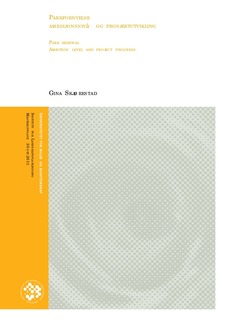| dc.description.abstract | Summary
Parks exists mainly of living materials and change continually. Throughout the history of landscape architecture, gardens have been redesigned after personal needs and preferences. After becoming a public responsibility the parks have been modified to apply the needs of the public and to meet the ideals of parkdesign and urban planning. Some parks nevertheless have survived hundreds of years hardly with any morphological changes and are representing important cultural heritage. All parks, regardless of their character and location needs maintenance, moreover it is sometimes necessary to pursue more comprehensive strategies. Pour maintenance or heavy usage may be reasons for this, but there is also a responsibility to restore historical values, and to modify parks in order for the public to have better use of them. The urban landscape is complex and highly dynamic, it is therefore important of purpose reasons, that management and planning of parks is continually updated. This has of course been the idea as long as park management has been a public responsibility. But the ambitions and professional level have at times been very questionable. The approximation methods have therefore been reflecting a somewhat random and inconsequent practice.
In light of this, my ambition for this thesis has been to bring forth different motives of park renewal, how we organize, and how we apply parkrenewal as a strategy on different parks. The empirical research is mainly based on three examples of park renewals, two in Norway and one from Denmark. Interviews of people that are involved in these projects have been the basic method to gather information. These people also contributed with written documentation. There has also been used supplemental documentation. The purpose of using this method has been to present actual situations and challenges that occur throughout park renewal projects. The result shows that parks with historical values often are prioritized over cultivated parks, though this does not necessarily mean more professional care. Social and cultural changes develop new needs and changed use of urban parks. Therefore the ambition level for these kinds of parks seems to rise. Competence, interests and ambition level very between different contributors. Project where several contributors are involved therefore tend to be unpredictable, with a risk of loosing purpose. All experience proves that the financial support of park management has been too low. In attempt of saving money, the need for more costly park renewals increases. There has been used a lot of time and resources in attempt to improve the public park management, apparently more than the parks themselves. | no_NO |
